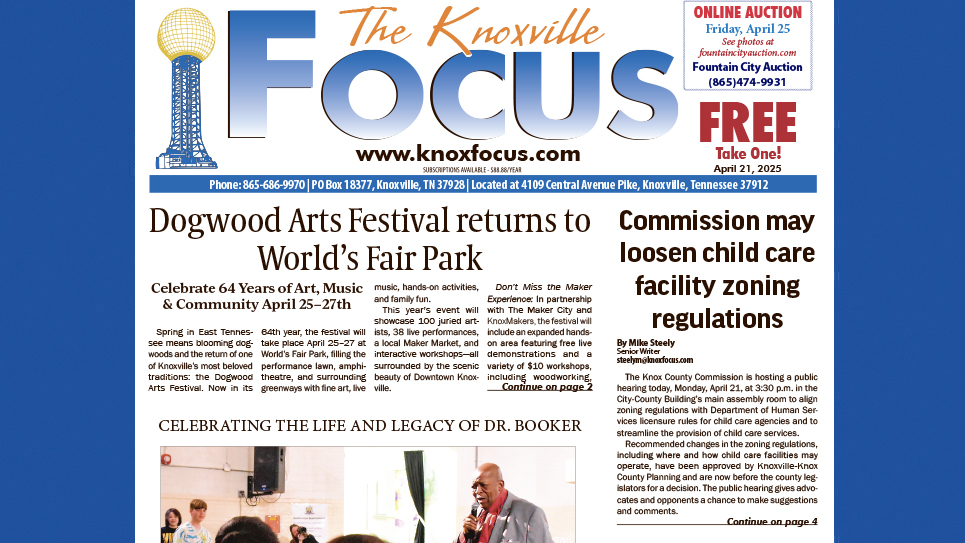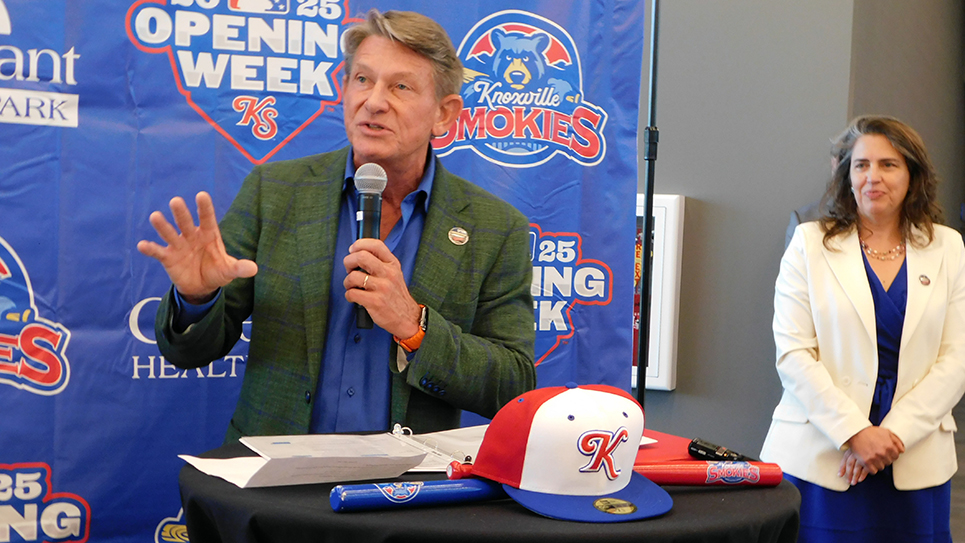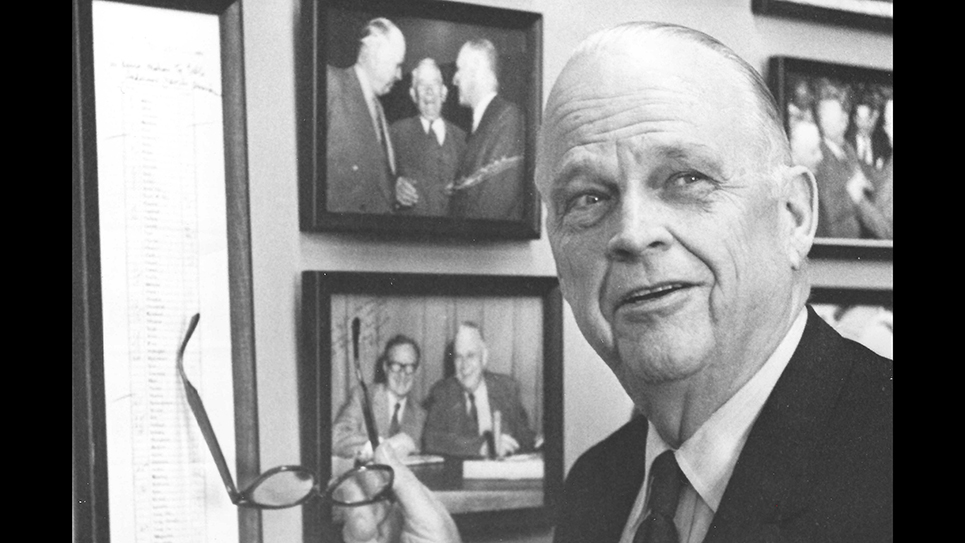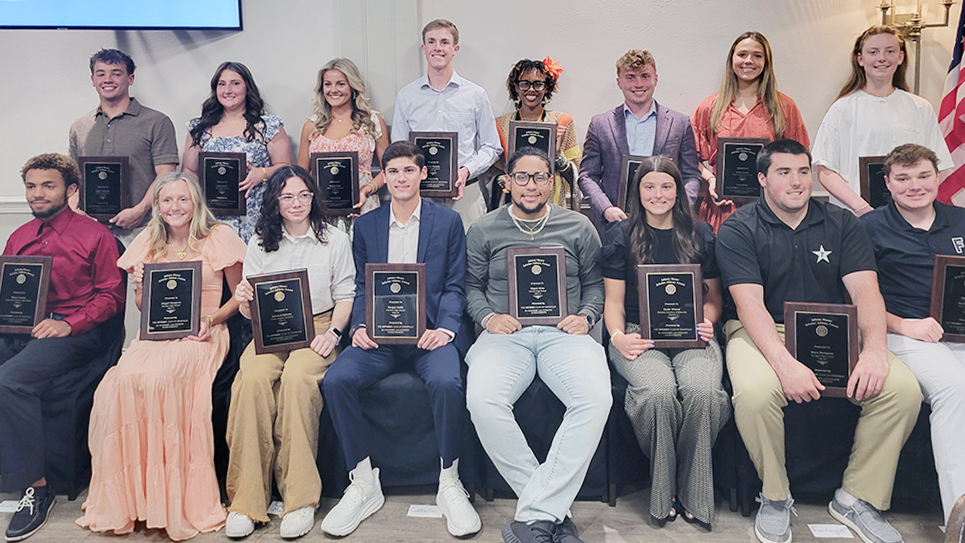Visionaries who dream great dreams
By Tom Mattingly
Over the years, Vol fans across the expanse of Big Orange Country have anxiously awaited game stories and columns in the state’s newspapers by Bob Wilson, Walter Stewart, Early Maxwell, Edgar Allen, Tom Anderson, F.M. Williams, John Bibb, Ed and Harold Harris, Tom Siler, Marvin West, Frank “Red” Bailes, Ben Byrd, Russ Bebb, David Climer, Ward Gossett, Chris Low, Jimmy Hyams, John Adams, Mike Strange, Gary Lundy, Randy Moore, Wes Rucker, and many others.
You may not recognize these names, however, but H.I. Leyshon and Jimmy Smith were scribes who covered the Vols in the early part of the 20th century. Writer Jimmy Burns wrote eloquently about the 1922 game with Emory & Henry, a 50-0 Tennessee win, the game in which the orange and white jerseys made their debut.
His game story had a nice literary touch, noting that the Vols “rendered the Wasps as helpless as a one-armed revenue officer in a moonshiner’s lair.” There was one minor detail missing in his story. There was no mention of the new orange jerseys.
There was another nice touch in the Knoxville Journal’s story of the 1909 Transylvania game. When the Vols, scoreless in their first eight games, knocked off Transy, 11-0, the Journal had the following sub-head on its game story: “The Team of the Recent Past Didn’t Know Itself Yesterday, and Thereby Hangs a Pleasant Tale.” They don’t write headlines like this one these days.
There’s more to the coverage. On Sunday afternoons, Vol fans turned on the television at 1 p.m. on Channel 6 in Knoxville and at various other times in cities across the state. After the opening credits, Vol broadcaster John Ward appeared on the screen with opening comments that went something like this: “It was a beautiful day yesterday afternoon at Legion Field in Birmingham, Alabama, and, when it was over, Tennessee came home with a 24-13 victory. Coach Doug Dickey, the turning point of this football game…”
Then Ward, succeeded in 1999 by Bob Kesling, and a host of head coaches, described the game in great detail for the next hour. It was great theatre.
It was marvelous, always high-tech way above the standards of its day. Even though they might have seen the game live a day earlier, Vol fans wouldn’t have missed seeing it for anything. For many years, the game film was shown on Monday afternoons after the Knoxville Quarterback Club’s weekly meeting. The film of the 1965 UCLA game, Tennessee 37, UCLA 34, was one of the most requested by civic clubs, church groups, and anybody else whose life is defined by the fortunes of the Vols.
In the history of every organization, there are those visionaries who dream great dreams and are fortunate enough to live to see their dreams reach fruition. There are those whose actions 30, 40, or even 50 years ago or longer, live on and help shape the sports landscape as we know it today.
The Vol Network, the brainchild of Lindsey Nelson and Edwin Huster Sr. in the 1940s, grew into one of the finest in college sports. Edwin Huster Jr. continued what Lindsey and his dad started, and the Vol Network stood then and stands today for class, professionalism, and dignity.
After Edwin C. Huster Jr. died suddenly in the early 2000s, Steve Early took over and the Vol Network hasn’t missed a beat. Today, Vol Network broadcasts are heard worldwide thanks to the Internet, and heroes in orange and white continue to build the Tennessee legend.
Nelson said he had originally wanted to call it the “Volunteer Network,” as in, “You’re listening to the Volunteer Network. Stand by for the kickoff.” He even rehearsed the tagline at his home on Valley View Drive in North Knoxville.
He needed Gen. Neyland’s approval. Gen. Neyland preferred “Vol Network,” Lindsey Nelson said.
So, the “Vol Network” it was.
Ward was the principal architect of a media strategy starting in the 1960s when the University of Tennessee athletic program was reaching for the stars, leading to a golden era when his voice and visage echoed far and wide across the expanse of Big Orange County.
Ward did play-by-play for the Vol Network in football from 1968-98 and in basketball from 1964-99. His broadcast style was light years ahead of its time. John brought home the story of Tennessee athletics in a manner that could never be duplicated.
Ward’s calls of these moments have resonated over the years, savored as an essential part of life wherever Vol fans gather. These were magic moments indeed, as Vol fans could not get enough coverage of their favorite team. Neyland Stadium and the Vol Network were the epicenter of it all.





